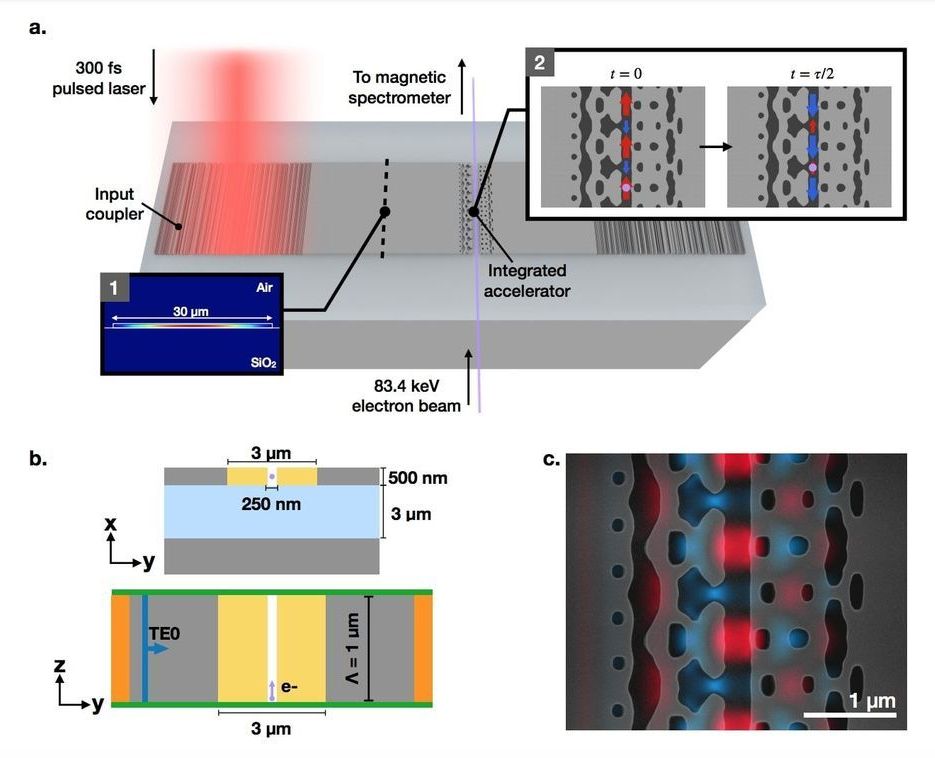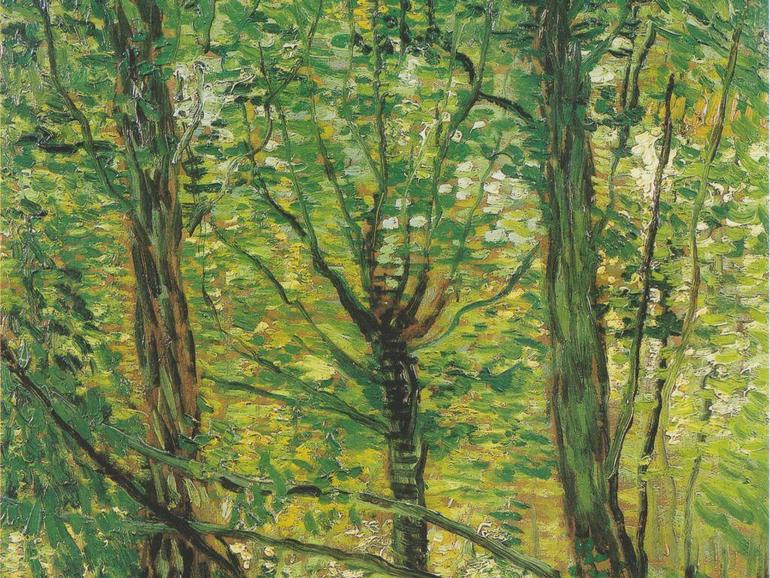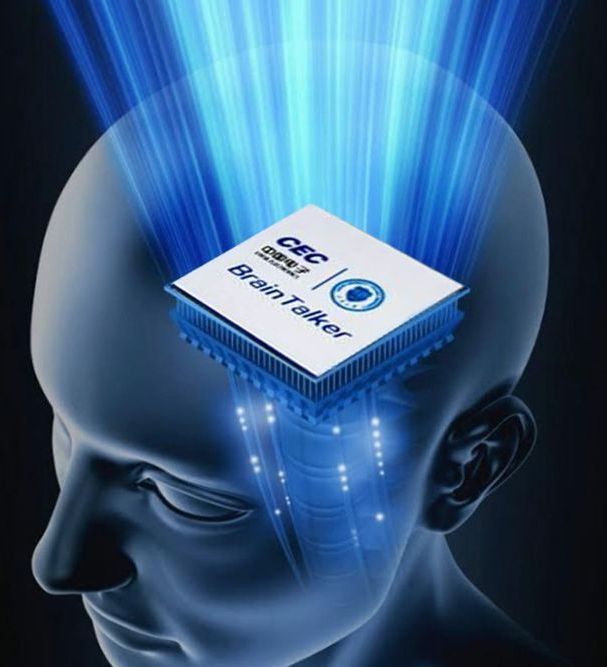Caltech engineers have constructed a new kind of microchip that can learn to heal its own information pathways.
- By Marshall Honorof, TechNewsDaily on March 12, 2013


Dielectric laser accelerators (DLAs) provide a compact and cost-effective solution to this problem by driving accelerator nanostructures with visible or near-infrared (NIR) pulsed lasers, resulting in a 10,000 times reduction of scale. Current implementations of DLAs rely on free-space lasers directly incident on the accelerating structures, limiting the scalability and integrability of this technology. Researchers present the first experimental demonstration of a waveguide-integrated DLA, designed using a photonic inverse design approach. These on-chip devices accelerate sub-relativistic electrons of initial energy 83.4 keV by 1.21 keV over 30 µm, providing peak acceleration gradients of 40.3 MeV/m. This progress represents a significant step towards a completely integrated MeV-scale dielectric laser accelerator.
Dielectric laser accelerators have emerged as a promising alternative to conventional RF accelerators due to the large damage threshold of dielectric materials the commercial availability of powerful NIR femtosecond pulsed lasers, and the low-cost high-yield nanofabrication processes which produce them. Together, these advantages allow DLAs to make an impact in the development of applications such as tabletop free-electron-lasers, targeted cancer therapies, and compact imaging sources.
They have designed and experimentally verified the first waveguide-integrated DLA structure. The design of this structure was made possible through the use of photonics inverse design methodologies developed by the team members. The fabricated and experimentally demonstrated devices accelerate electrons of an initial energy of 83.4 keV by a maximum energy gain of 1.21 keV over 30 µm, demonstrating acceleration gradients of 40.3 MeV/m. In this integrated form, these devices can be cascaded to reach MeV-scale energies, capitalizing on the inherent scalability of photonic circuits. Future work will focus on multi-stage demonstrations, as well as exploring new design and material solutions to obtain larger gradients.

We can do this by shrinking the size and mass of the spacecraft, allowing many to be launched together.

The Sprite is a tiny (3.5 by 3.5 centimeter) single-board spacecraft. It has a microcontroller, radio, and solar cells and is capable of carrying single-chip sensors, such as thermometers, magnetometers, gyroscopes, and accelerometers. To lower costs, Sprites are designed to be deployed hundreds at a time in low Earth orbit and to simultaneously communicate with a ground station receiver.



A MIND reading brain computer chip has been announced at the World Intelligence Congress in China.
The breakthrough device is called Brain Talker and allows a person to control a computer with just their brainwaves.
Brain-computer interfaces (BCIs) are devices that have been designed to create simple communication between the human brain and computers.

The Gordon and Betty Moore Foundation has awarded 13.5 million US dollars (12.6 million euros) to promote the development of a particle accelerator on a microchip. DESY and the University of Hamburg are among the partners involved in this international project, headed by Robert Byer of Stanford University (USA) and Peter Hommelhoff of the University of Erlangen-Nürnberg. Within five years, they hope to produce a working prototype of an “accelerator-on-a-chip”.

Researchers from the University of Bristol and Nippon Telegraph and Telephone claim to have developed a fully-programmable quantum optical chip able to encode and manipulate photons in an infinite number of ways. This breakthrough may pave the way for true quantum optical computing systems.

